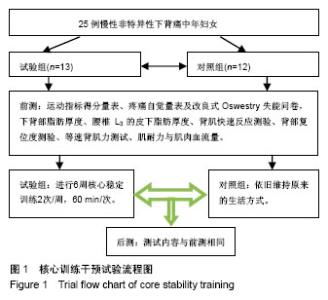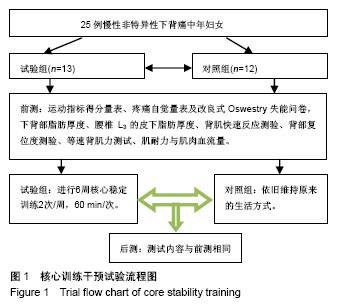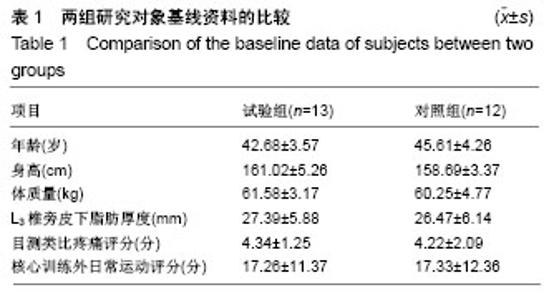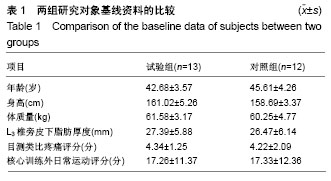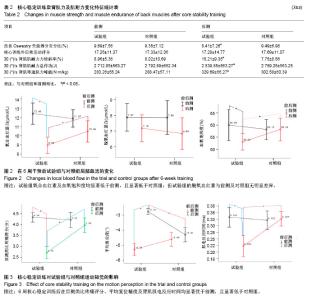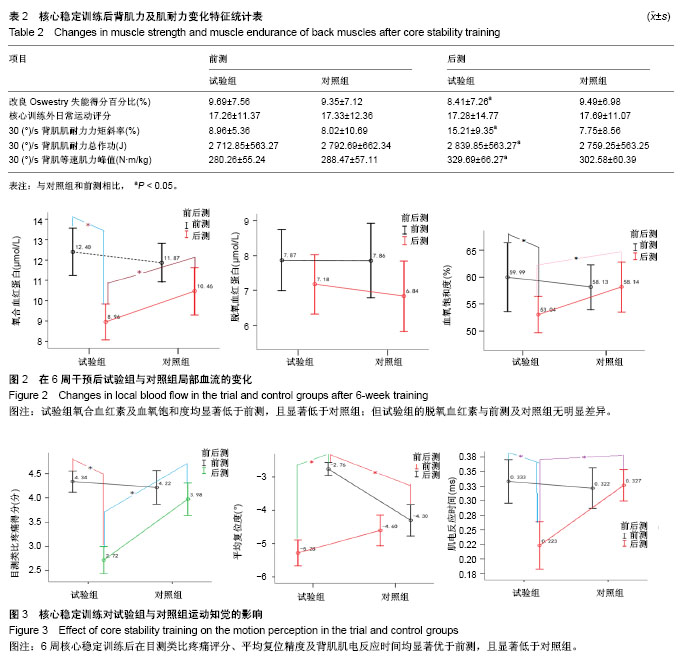| [1] Frank JW, Kerr MS, Brooker A, et al. Disability resulting from occupational low back pain. Part II What do we know about primary prevention? A review of the scientific evidence on prevention before disability begins. Spine. 1996; 21(24): 2908-2917.[2] 岳寿伟. 腰痛的评估与康复治疗进展[J].中国康复医学杂志, 2017,32(2): 136-138.[3] Jull GA, Richardson CA. Motor control problems in patients with spinal pain: a new direction for therapeutic exercise. J Manipulative Physiol Ther. 2000; 23(2):115-117.[4] Bejia I, Younes M, Jamila HB, Khalfallah, et al. Prevalence and factors associated to low back pain among hospital staff. Joint Bone Spine. 2015;72(3): 254-259.[5] Karahan A, Kav S, Abbasoglu A, et al. Low back pain: prevalence and associated risk factors among hospital staff. J Adv Nurs. 2009;65(3): 516-524.[6] Davidson M, Keating JL. A comparison of five low back disability questionnaires: reliability and responsiveness. Phys Ther.2012;82(1):8-24.[7] Newcomer K, Laskowski ER, Yu B, et al. The effects of a lumbar support on repositioning error in subjects with low back pain. Arch Phys Med Rehabil. 2001;82(7):906-910.[8] Jacobs JV, Lomond KV, Hitt JR, et al. Effects of low back pain and of stabilization or movement-system-impairment treatments on induced postural responses: A planned secondary analysis of a randomised controlled trial. Man Ther. 2016;21: 210-219.[9] Demoulin C, Crielaard JM, Vanderthommen M. Spinal muscle evaluation in healthy individuals and low-back-pain patients: A literature review. Joint Bone Spine.2014;74(1): 9-13.[10] Kell RT, Bhambhani Y. Relationship between erector spinae muscle oxygenation via in vivo near infrared spectroscopy and static endurance time in healthy males. Eur J Appl Physiol.2008;102(2):243-250.[11] Wallwork TL, Stanton WR, Freke M, et al. The effect of chronic low back pain on size and contraction of the lumbar multi?dus muscle. Man Ther. 2009;14(5): 496-500.[12] Williams KA, Petronis J, Smith D, et al. Effect of Iyengar yoga therapy for chronic low back pain. Pain.2015; 115(1-2):107-117.[13] 陈怡臻,钟孟玲.垫上核心训练课程之结构分析[J].彰化师大体育学报, 2007,7:10-15.[14] Miyamoto GC, Costa LOP, Galvanin T, et al. Efficacy of the addition of modified Pilates exercises to a minimal intervention in patients with chronic low back pain: A randomized controlled trial. Phys Ther. 2013; 93(3): 310-320.[15] Donzelli S, Domenica E, Cova AM, et al. Two different techniques in the rehabilitation treatment of low back pain: A randomized controlled trial. Eura Medicophys. 2006;42(3):205-210.[16] Rydeard R, Leger A, Smith D. Pilates-based therapeutic exercise: Effect on subjects with nonspecific chronic low back pain and functional disability: A randomized controlled trial. J Orthop Sports Phys Ther. 2006;36(7): 472-484.[17] Curnow D, Cobbin D, Wyndham J, Choy ST. Altered motor control, posture and the Pilates method of exercise prescription. J Bodyw Mov Ther.2009;13(1):104-111.[18] Daniel A. Ostrovsky. Yoga may be noninferior to physical therapy for disability and pain at 12 weeks and both might improve function more than education in low resource adults with chronic nonspecific low back pain. Explore (NY). 2017;13(6):424-426.[19] Kauppila LI, Mikkonen R, Mankinen P, et al. MR aortography and serum cholesterol levels in patients with long-term nonspeci?c lower back pain. Spine. 2014;29(19): 2147-2152.[20] Taelman J, Vanderhaegen J, Robijns M, et al. Estimation of muscle fatigue using surface electromyography and near-infrared spectroscopy. Adv Exp Med Biol.2011;701:353-359.[21] Agathe A, Nicolas O, Patrick M, et al. Aerobic metabolism response in paraspinal muscles of chronic low back pain patients and judo athletes during an isokinetic trunk extension exercise. Ann Phys Rehabil Med. 2016;59:20-21.[22] 林姵吟,徐炜杰,郑景峰.以近红外线光谱仪探讨递增负荷运动对大脑与肌肉氧饱和度之影响[J].运动生理暨体能学报, 2015,20:13-21.[23] Kankaanpää M, Colier WN, Taimela S, et al. Back extensor muscle oxygenation and fatigability in healthy subjects and low back pain patients during dynamic back extension exertion. Pathophysiology. 2005;12(4):267-273.[24] 张佳玲,张瀞文,吴慧君.抗力球肌力训练与器械式阻力训练对大学生核心肌肉适能之比较研究[J].运动生理暨体能学报,2008,7:41-50.[25] 邱俊杰.慢性下背痛治疗新观念——核心复健运动[J].台北市医师公会会刊,2014,48(2):54-59.[26] Danielle M. Stewart, Diane E. The use of intermittent trunk flexion to alleviate low back pain during prolonged standing. J Electromyogr Kinesiol.2016;27:46-51.[27] Smidt N, de Vet HC, Bouter LM, et al. Effectiveness of exe rcise therapy: A best-evidence summary of systematic reviews. Aust J Physiother.2011;51(2):71-85.[28] Mohsen Y, Hamid RB, Mostafa Q, et al. The effectiveness of acupuncture, acupressure and chiropractic interventions on treatment of chronic nonspecific low back pain in Iran: A systematic review and meta-analysis. Complement Ther Clin Pract.2017;27:11-18.[29] Airaksinen O, Brox JI, Cedraschi C, et al. European guidelines for the management of chronic nonspeci?c low back pain. Eur Spine J.2006; 15(2):192-300. |
